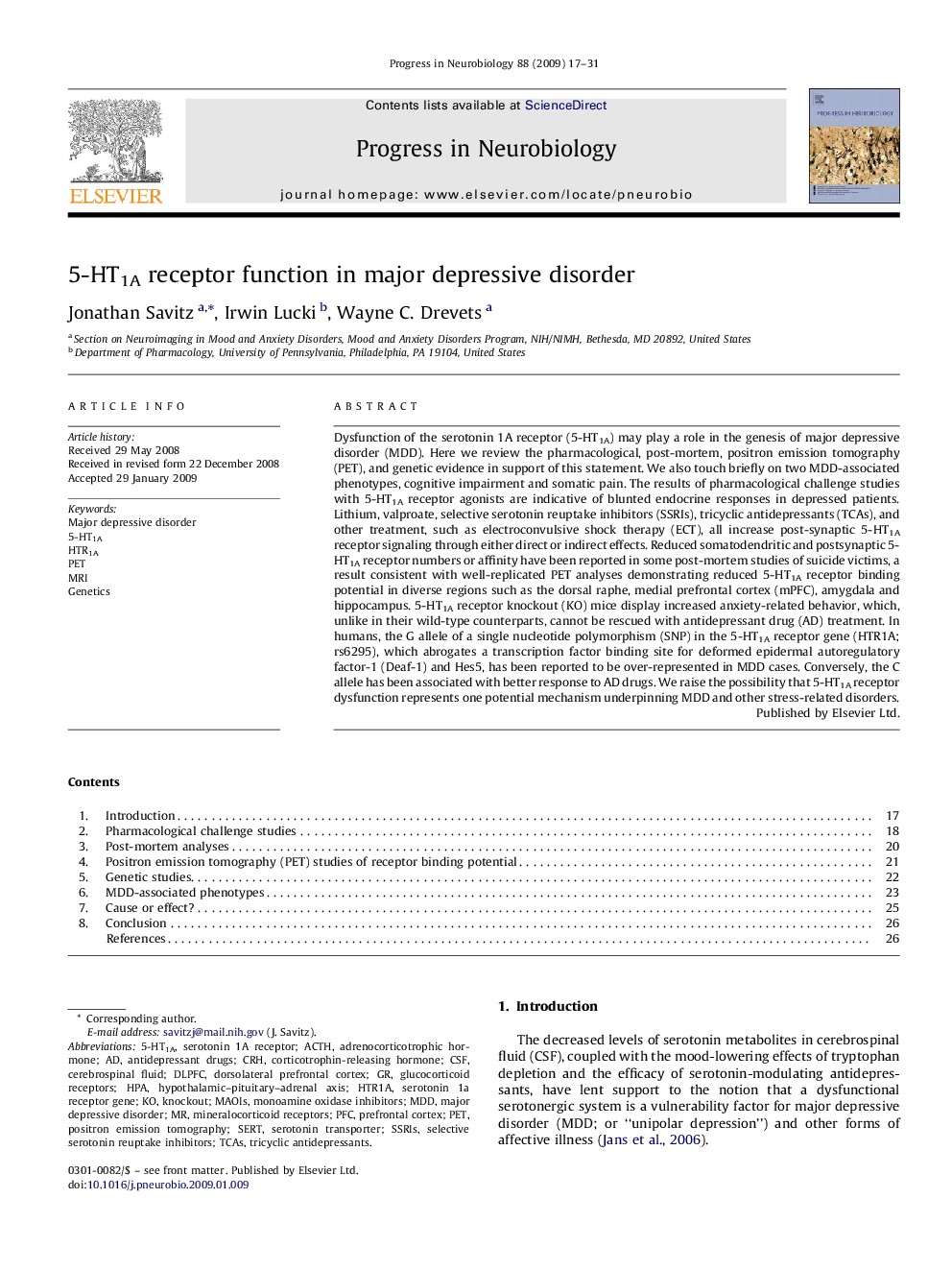| کد مقاله | کد نشریه | سال انتشار | مقاله انگلیسی | نسخه تمام متن |
|---|---|---|---|---|
| 4353743 | 1298496 | 2009 | 15 صفحه PDF | دانلود رایگان |

Dysfunction of the serotonin 1A receptor (5-HT1A) may play a role in the genesis of major depressive disorder (MDD). Here we review the pharmacological, post-mortem, positron emission tomography (PET), and genetic evidence in support of this statement. We also touch briefly on two MDD-associated phenotypes, cognitive impairment and somatic pain. The results of pharmacological challenge studies with 5-HT1A receptor agonists are indicative of blunted endocrine responses in depressed patients. Lithium, valproate, selective serotonin reuptake inhibitors (SSRIs), tricyclic antidepressants (TCAs), and other treatment, such as electroconvulsive shock therapy (ECT), all increase post-synaptic 5-HT1A receptor signaling through either direct or indirect effects. Reduced somatodendritic and postsynaptic 5-HT1A receptor numbers or affinity have been reported in some post-mortem studies of suicide victims, a result consistent with well-replicated PET analyses demonstrating reduced 5-HT1A receptor binding potential in diverse regions such as the dorsal raphe, medial prefrontal cortex (mPFC), amygdala and hippocampus. 5-HT1A receptor knockout (KO) mice display increased anxiety-related behavior, which, unlike in their wild-type counterparts, cannot be rescued with antidepressant drug (AD) treatment. In humans, the G allele of a single nucleotide polymorphism (SNP) in the 5-HT1A receptor gene (HTR1A; rs6295), which abrogates a transcription factor binding site for deformed epidermal autoregulatory factor-1 (Deaf-1) and Hes5, has been reported to be over-represented in MDD cases. Conversely, the C allele has been associated with better response to AD drugs. We raise the possibility that 5-HT1A receptor dysfunction represents one potential mechanism underpinning MDD and other stress-related disorders.
Journal: Progress in Neurobiology - Volume 88, Issue 1, May 2009, Pages 17–31